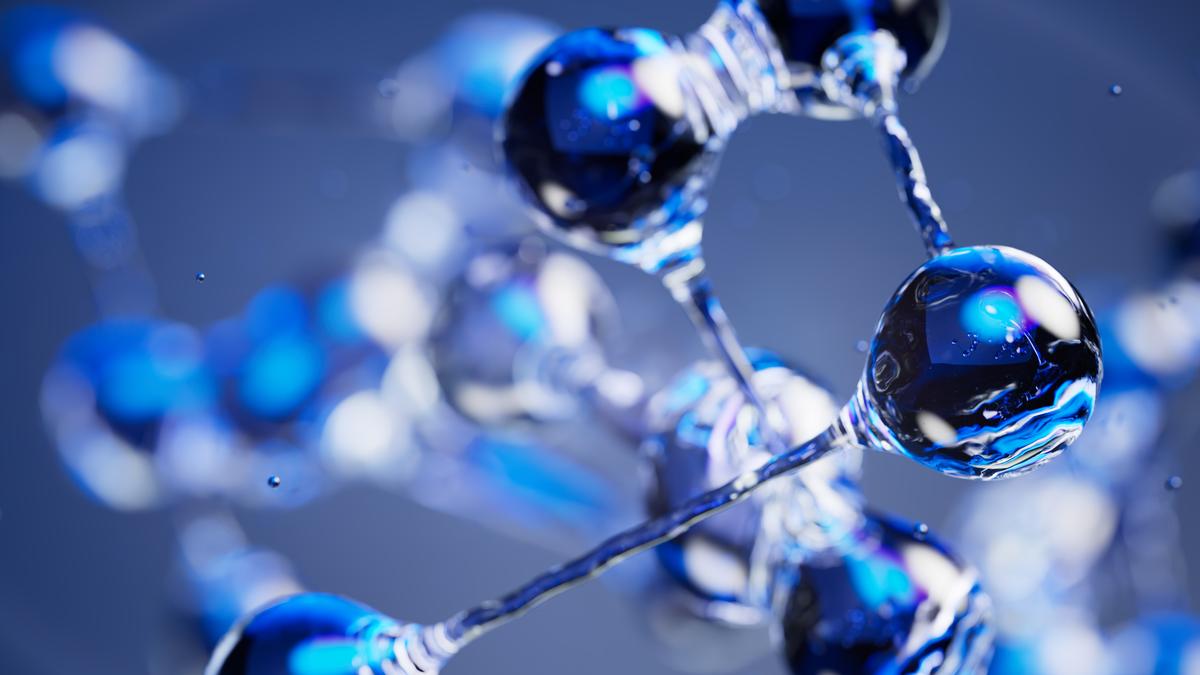
‘The government has defined hydrogen produced by electrolysers using electricity from solar and wind as green and has provided incentives’
| Photo Credit: Getty Images/iStockphoto
The goal of achieving a net-zero economy can be realised only by massive electrification of end uses of energy. Besides their use in generating electricity, fossil fuels are used to provide heat and molecules for industrial processes. The use of fossil fuels for providing heat is ubiquitous and well understood. Examples of providing molecules include the use of carbon (from coal) in steel making to reduce iron ore, and the use of hydrogen from natural gas to make ammonia, which is a feedstock for the fertilizer industry. In the steel industry, hydrogen can be substituted for carbon. Thus, a net-zero economy would mean electrification of end uses and the use of hydrogen for many industrial processes.
Power demand and nuclear power plans
Forecasts made by several academics, including this writer and his colleagues, predict a steep increase in electricity demand to meet the goal of economy-wide net-zero emissions for a developed India. Solar, wind and hydro cannot provide all the electricity that India needs, and nuclear has to be part of the energy mix in India. Considering this, the Government of India has set an aspirational target to reach 100 GW of installed capacity based on nuclear power by 2047.
The Nuclear Power Corporation of India Limited (NPCIL) has announced an ambitious programme to set up several 700 MW Pressurized Heavy Water Reactors (PHWRs). Two units are working at Kakrapar in Gujarat. One unit in Rajasthan was synchronised to the grid in March 2025 and another is under commissioning. Two units are coming up in Haryana. In 2017, the NPCIL announced the construction of a fleet of 10 reactors, and on March 11 this year, the Chairman and Managing Director of NPCIL announced plans to construct an additional 10 units. When completed, the total will amount to 26 units of 700 MW rating.
Many public sector undertakings and departments such as the Indian Railways are looking to deploy nuclear power plants.
The NPCIL has invited proposals from the industry for setting up 220 MW PHWRs, christened as Bharat Small Reactors (BSRs) for its captive use. The NPCIL has several 220 MW PHWRs in its portfolio, and the BSR is its evolutionary version. Thus, the NPCIL is marching ahead to set up PHWRs, a technology that it has mastered. Indian industry is capable of manufacturing all equipment and components for PHWRs.
Low carbon sources and solutions
Therefore, in the years ahead, the share of electricity provided by low-carbon sources, that is, hydro, nuclear, solar and wind, will increase. Solar and wind are intermittent sources, and nuclear is best operated as base load. At present, to balance supply and demand during solar hours, coal-fired power plants are flexed. Flexing coal-fired plants and letting solar and wind continue to operate lowers carbon emissions from electricity generation. In the emerging scenario, when all sources are low-carbon, balancing supply and demand will need innovative solutions.
Suggestions to explore the possibility of flexing nuclear power plants have been made. It is not desirable to flex power plants set up with a high capital cost. It is worth recalling that the capital cost of a nuclear plant is higher than a coal-fired power plant, but the variable cost is lower.
Also, flexing nuclear power plants is technically challenging. Though adopted to a limited extent in some countries for certain reactor designs, it is also not cost-competitive for two reasons: when operated at low power, the variable cost might remain the same as for operating at full power or only marginally come down. This does not make any environmental or economic sense. Many advanced reactors are being designed to be load-following, but this is a technology for the future.
Producing hydrogen by electrolysers when there is surplus electricity in the system is a solution based on mature technologies. One can connect electrolysers and electricity storage devices to the grid and operate them to shape demand so that there is no need to flex nuclear power plants or curtail solar and wind. Following this approach, one can reduce electricity storage requirements. Considering that the cost of electricity storage is an issue for large-scale integration of solar and wind, this approach provides a win-win solution.
Electrolysers are low-cost equipment and can be operated at different power levels. The scheme proposed for hydrogen production using surplus electricity in the system is not for the reconversion of hydrogen to electricity but for its use in the industry.
The government has defined hydrogen produced by electrolysers using electricity from solar and wind as green and has provided incentives. A certification scheme has also been drafted for green hydrogen, where electrolytic and biomass-based hydrogen with CO2 emissions not exceeding 2 kg CO2/kg H2 on average is called green. Life-cycle greenhouse gas emissions (expressed in terms of a kg of greenhouse gas per kg of hydrogen) for hydrogen production from renewable sources and nuclear power plants are comparable. It is suggested that the taxonomy be changed from green hydrogen to low-carbon hydrogen based on a threshold for carbon emissions. This will enable nuclear to be included in the definition of low-carbon hydrogen
Need for synergy
At present, electricity storage and hydrogen production are considered distinct activities. This needs to change. Hydrogen generation and electricity storage need to be synergised to improve economics. Our case studies demonstrate that by synergising hydrogen generation and battery storage, one can improve overall economics.
We recommend two policy changes: changing the taxonomy by replacing green hydrogen with low-carbon hydrogen, and synergising electricity storage and hydrogen production.
R.B. Grover is a Member of the Atomic Energy Commission, a former Principal Adviser of the Department of Atomic Energy, and a former Vice-Chancellor of the Homi Bhabha National Institute
Published – April 16, 2025 12:08 am IST
